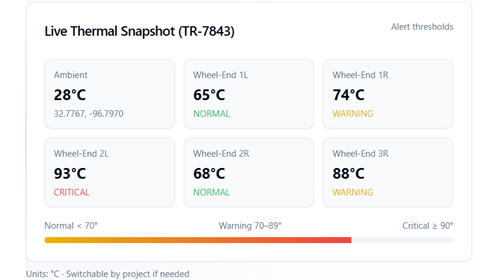

/
April 22, 2020
/
#
Min Read
The Current State of Automotive Software Related Recalls
As vehicles become more connected and as the amount of software code continues to increase to enable smarter capabilities, it’s not surprising to see a sharp rise in the volume of software related recalls that were reported for 2019 in the United States. From a global perspective, connected car shipments for 2019 exceeded 51 million units (up 45% from 2018) and are expected to reach 75 million units by 2023.
We dug through the latest numbers and analyzed the National Highway Traffic Safety Administration (NHTSA) recall database to shed light on the current state of software related recalls in the US automotive industry and the challenges automakers face.
While growth in software recall numbers hasn’t happened overnight, it has consistently increased, reaching near all-time highs for 2019 representing a 3X spike, year-on-year from 2009. It makes sense that newer vehicles present more software defects than older vehicles. The most affected model years being 2018 and 2019 and the least affected model years being 2004 through 2010, thus showing the upward trend of software based applications (and thus defects) on newer generation vehicles.
A software-first approach in vehicle design is new territory for many automakers (barring exceptions such as Tesla and other emerging EV players that operate like software companies) and large scale software development initiatives can take years to come to fruition.

Per the numbers, it takes approximately 6 months to achieve a software recall completion rate of +/- 50%, and in many cases over one full calendar year to completely remedy a software recall campaign.
The data also shows the average number of days from the day that a recall is announced to the date the recall began, is 48 days - a decrease since 2018, where it was 54 days. This is the number of days that on average it takes for OEMs to create a fix and begin remedying recalls at dealerships. In a few cases it has taken automakers more than 5 months to provide a software fix.
As of March 2020, when this data was analyzed, there were still 16 software recalls from October through December 2019, that remain un-remedied and the recall has yet to begin, demonstrating that in these cases, the software remedy is exceeding 3-5 months. To date, a large number of vehicles remain on the road operating with outdated software, thereby presenting potential risks to driver safety.
Of all the software recalls for 2019, only one was completed Over-The-Air (OTA) by Mercedes Benz USA, yet even in this case, the OTA completion rate was unknown as the campaign stated that dealers would need to “check software for a successful OTA or update the communication module software as needed”.
As of last month's data for 2018, the completion rate of 80.82% has taken on average 14 months to achieve, leaving 23.3% of vehicle software related recalls outstanding. For 2018 there are still 3 software recalls that have not been addressed.
The completion rate, calculated by the NHTSA, corresponds to the percentage of remedied vehicles divided by the number of all involved vehicles minus the ones that are unreachable and removed, as seen on the image below.


Unfortunately, these numbers are not under direct control of OEMs: once they notify the public, the onus is upon the owner to bring the vehicle in for servicing at the dealership, subject to service schedules and capacity.
On the other hand OEMs are obligated under law to provide timely notification of defects to owners, as well as declare to NHTSA all recall updates as soon as the data becomes available. The Vehicle Safety Act provides for civil penalties for certain violations and authorizes NHTSA to enter into settlements on penalties. Failure to notify and update numbers is considered a civil penalty, which comes with high fines to pay, anywhere between $20,000 to $200,000,000. Hence, timely notification and action become even more critical to contain these indirect recall costs.
How Many Software Recalls per Vehicle?
On average, affected vehicles have 1 open software recall, which represents the majority of overall cases. The remaining has 2, but there is one specific case with the highest number. The most affected vehicle by model and year is the Porsche Cayenne 2019, which has had 3 software recalls for 2019: two from April 2019 and one from December 2019, affecting overall collectively 58,336 vehicles and an overall completion rate of 31% in ~ 6 months.
The Top 5 Software Defects
To identify the top most common software defects in the US, we analyzed the data and classified each software recall by affected ECUs, resulting in these top 5 components:
1. Brake ECU (4,643,931 vehicles across 11 NHTSA IDs)
2. Powertrain Control Module (1,690,616 vehicles across 4 NHTSA IDs)
3. Backup Camera (1,486,303 vehicles across 2 NHTSA IDs)
4. Engine Control Module (677,714 vehicles across 8 NHTSA IDs)
5. Fuel Injection ECU affecting (437,032 vehicles across 1 NHTSA ID)
Together the above account for more than 87% of the total involved population, but only 30.5% of the overall number of software recalls for 2019. If we analyze each defect based on how many OEMs share the same issue by involved NHTSA IDs* with the same software fix solution, the top 5 software recalls are as follows:
1. Instrument Panel (12 NHTSA IDs affecting 167,988 vehicles)
2. Brake ECU (11 NHTSA IDs affecting 4,643,931 vehicles)
3. Engine Control Module (8 NHTSA IDs affecting 6,77,714 vehicles)
4. Transmission ECU (8 NHTSA IDs affecting 235,679 vehicles)
5. Body ECU (5 NHTSA IDs affecting 139,834 vehicles)
These together account for more than 57% of the total involved population, but over 51% of the total number of software recalls for 2019 (each NHTSA ID uniquely identifies one specific recall for an OEM, involving all the affected vehicle models and years.)
OEM Analysis
FCA is at the top of the list, with the highest number of software recalls for 2019, capping at 8, across 11 models and 5 years. Right after are Ford and Daimler Trucks with 6 software recalls, spanning respectively across 8 models and 7 years for Ford and across 3 models and 3 years for the commercial Daimler vehicles. In third position we have GM, VW and Porsche, respectively across 10 models and 7 years, 13 models and 7 years, 22 models and 5 years.
These manufacturers combined have 41% of all software recalls and a combined 7,116,028 vehicles affected, 69.87% of the total for the year. At the bottom of the list we find big names like Ferrari, Aston Martin, Bentley, Maserati and Volvo which had no software recalls for 2019.
Most Affected Vehicles?
The overall most affected vehicle based on how many model years have been recalled for one specific software defect are actually commercial vehicles, specifically fire trucks, produced by Pierce, where the affected products (model make and year) sum up to 90 for a total number of 994 affected units, impacting 11 production years, from 2004 to 2018.
The most affected lightweight vehicles by highest number of model years affected (6 model years), and the highest number of units affected overall (3,456,719 units) currently with 2 active software recalls (second highest value) for non-commercial vehicles are the following GM models:
• GMC Sierra 1500
• Chevrolet Silverado 1500
• Chevrolet Suburban
• Chevrolet Tahoe
• GMC Yukon
The above models are followed by the Mercedes Benz C300, with 6 model years affected and 1 software recall. As shown in the main infographic above, the top 5 OEMs - GM, Ford, Nissan, Subaru and Honda - have the highest number of affected vehicles in total, representing 84.7% of all vehicles affected.
Software Recall Completion Rates

As shown in the chart above, the majority of automakers have completion rates higher than 50% and very few have poor rates, which is overall a positive sign. This calculation includes all the addressed software recalls by each OEM and they are subject to change in the next months/year, due to the addressing of currently unresolved software issues.
As we enter Q2 2020, this year has already brought to light new software recall issues in the first three months of 2020:
Volvo (who had zero recalls in 2019) recalled all 2019 and 2020 models for a software issue with the AEB sensor inside the windshield, on March 12th accounting for nearly 750,000 vehicles worldwide, 121,605 of which are in the US. The recall is expected to begin May 1st 2020.
FCA is recalling 318,537 vehicles in the US, across 11 models, for 2020 and 2019, due to a software error that can cause the rear view camera image to remain displayed after the vehicle has been shifted out of reverse. As such, these vehicles fail to comply with the requirements of Federal Motor Vehicle Safety Standard (FMVSS) number 111, "Rearview Mirrors”. The solution is an update of the radio display software, delivered by a dealer. The recall is expected to begin on May 22, 50 days after the OEM identified the issue.
As of January 30th, 2020, certain 2019 Chevrolet Silverado 1500 and GMC Sierra 1500 vehicles (148,055 units) are being recalled for a software update on the software they received in the previous recall, for the Electronic Brake Control Module (EBCM). The first software has an error and as a result, the vehicle's electronic brake assist could be disabled. As such, these vehicles fail to comply with the requirements of Federal Motor Vehicle Safety Standard (FMVSS) number 126, "Electronic Stability Control" and 135, "Light Vehicle Brake Systems." The recall began February 24th, making the remedy promptly available in 25 days.
Reflections
As the number of software recalls will continue to rise in the foreseeable future, OEMs must become quicker and more agile in reporting and fixing them in a timely manner. The outcomes of this approach benefits the entire industry to help reduce:
• Un-remedied vehicles on the road, consequently reducing crash risks;
• OEMs overall direct recall costs
• Trips to the dealer for each vehicle owner
• Vehicles not compliant with FMVSS requirements
• Indirect OEMs costs to brand, reputation and potential regulatory fines
By rethinking how to remove software defects from the recall equation, the industry can also achieve new gains in:
• Dealer network efficiency, capacity and effectiveness
• Control over completion rate speed and coverage
• Software fixes that are timely, effective and secure
Join the 7th Annual “Automotive Recall Summit” Webinar on April 29th hosted by the Society of Automotive Analysts and Stout
Are you interested in learning more about the overall state of recalls in the automotive industry?
Stout, a global advisory firm, is hosting their annual recall industry analysis event with the Society of Automotive Analysts. They will be discussing today's recall landscape, trends and insights regarding automotive recall size, scope and type. This year, due to COVID-19 and shelter-in-place orders, the event will be held in digital form! We are excited to share that Sibros’ CEO Hemant Sikaria will be speaking in this year's summit to discuss how software delivery and readiness can benefit OEMs in the long run as it relates to the growing trends in software related defects.







-min.png)



